18+ Sample Severance Agreement
-

Severance Agreement Template
download now -
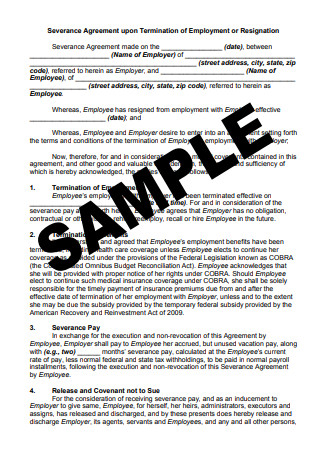
Sample Severance Agreement
download now -

Mortgage Severance Agreement
download now -
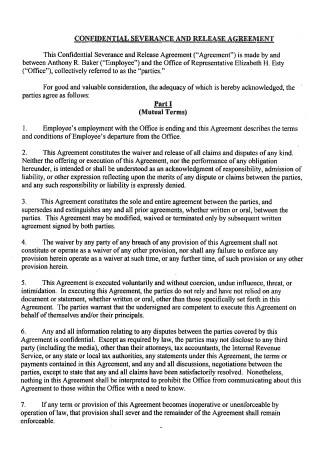
Confidential Severance and Release Agreement
download now -
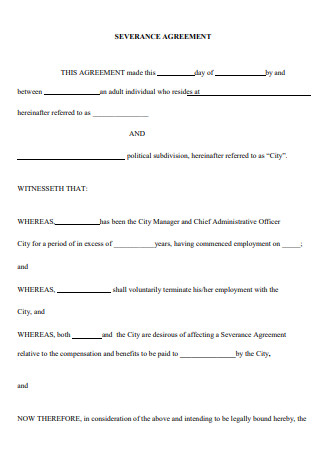
Basic Severance Agreement
download now -
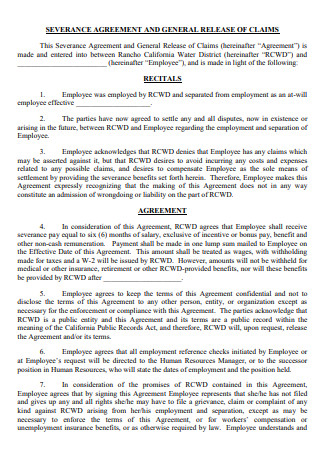
Severance Agreement and General Release of Claims
download now -
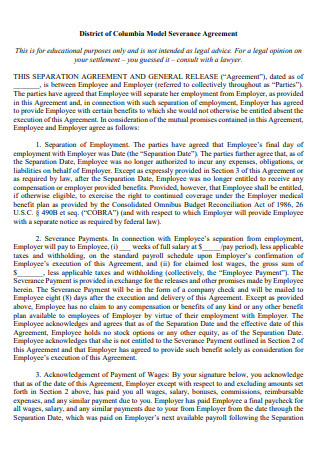
District Model Severance Agreement
download now -
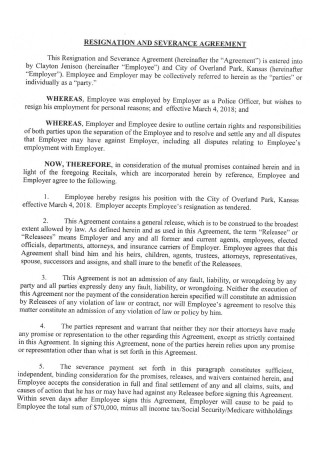
Resignation and Severance Agreement
download now -
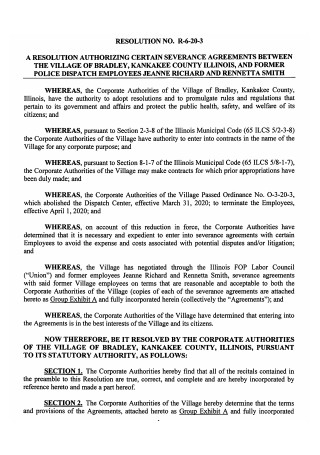
Severance Agreement in PDF
download now -

Severance Agreement Example
download now -
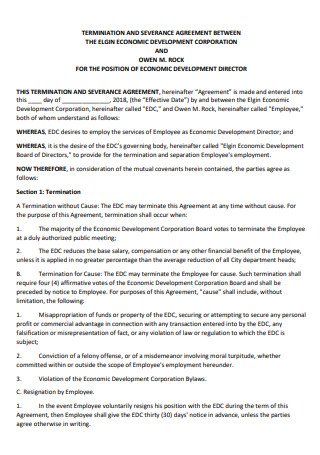
Termination and Severance Agreement
download now -
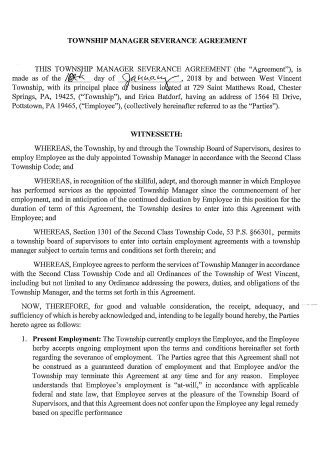
Township Manager Severance Agreement
download now -
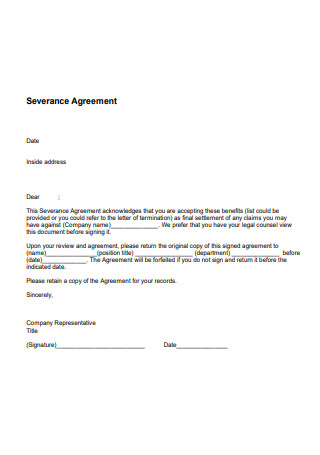
Formal Severance Agreement
download now -

Severance Agreement and General Release
download now -
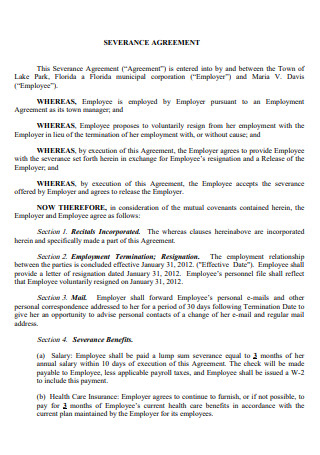
Printable Severance Agreement
download now -
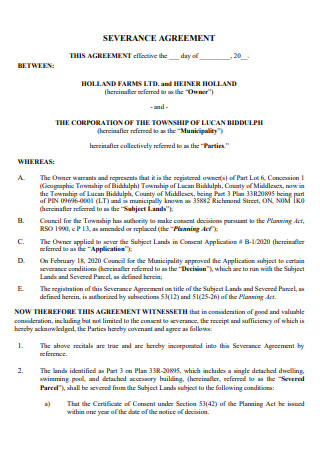
Standard Severance Agreement
download now -
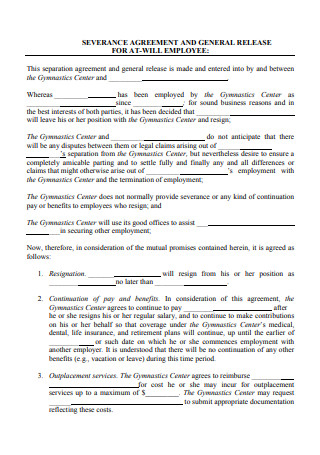
Severance Agreement Format
download now -
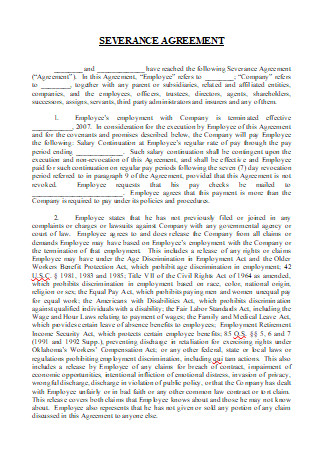
Severance Agreement in DOC
download now -
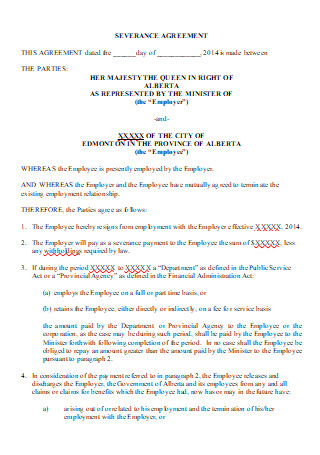
Employee Severance Agreement Template
download now
FREE Severance Agreement s to Download
18+ Sample Severance Agreement
What Is a Severance Agreement?
Components of a Severance Agreement
How To Deliver a Severance Agreement to an Outgoing Employee
FAQs
What is the purpose of providing severance agreements to employees?
Can an employee sue a company if they sign the severance agreement?
What happens if you break or breach a severance agreement as an employer?
What is a severance agreement, and what benefits does it give to employees leaving the company? By reading the article below, you can learn more about these agreements, including their definition, composition, and construction. You can also find answers to frequently asked questions regarding these documents.
What Is a Severance Agreement?
A severance agreement is a legal document detailing the responsibilities and rights of the employer and employee. It lays out all the offered benefits coming from the company, including pay and insurances, and guarantees that termination of the contract is valid and went through a just process. Several organizations also utilize the severance agreement to elaborate on non-compete concerns. The severance agreement and severance pay assure employees’ understanding of the terms and conditions regarding their termination. They recognize and agree that the end of the contract leads to changes in payment, insurance, and other benefits. In exchange for signing the document, an employer offers severance pay that aids employees in transitioning to the world outside the company. The severance pays works as a continuous salary for a defined period to help the employee in job hunting or allocate for a business.
According to a published article by SHRM in March 2018 regarding severance pays in the United States, almost all businesses, roughly 97 percent of companies, mention giving severance pay to their employees. However, only 55 percent of organizations present formal and written severance policies during 2017, with 52 percent setting minimum and maximum amounts.
Components of a Severance Agreement
Since severance agreements are complex and legal forms of document, they must detail the essential elements that explain the items, pay or other benefits an employee receives after agreeing to the separation terms set by the management. Aside from the termination terms, the agreement also influences employee behavior at their departure. It is safe to consider the statements and clauses that are present in the document. Below are the common elements that you can include in your severance agreement.
How To Deliver a Severance Agreement to an Outgoing Employee
Once you have all the necessary components listed above in your severance agreement, with the help of a contract attorney, the next step is to deliver and present the document to an outgoing individual. Below are four easy and simple steps to follow when the time comes to communicate the agreement. The following steps ensure that you cover the necessary parts of the document, leaving nothing to chance.
Step 1: Provide Sufficient Time for Consideration
Most employees inquire about the amount of time they have to sign the document after receiving a severance agreement from the human resource department. Individuals ask about it because these documents are vital, and no one would think about rushing into signing them without reading the fine print. As consideration, employees must be given at least 21 days for a thorough review of the terms and conditions written on the agreement. It is also necessary to mention to the employee to implore the aid of an attorney during its review. Never pressure your employees to sign the document immediately, and their acceptance of the severance agreement must be voluntary. Upon signing, employees have a seven-day revocation period.
Step 2: Indicate a Precise Competitor List to Support the Non-Compete Agreement
If your severance agreement contains a non-compete clause, help your employees by providing a list of known competitors in the industry. It also ensures that the section holds up in court if and when there is a need. It is also critical to explain that the non-compete agreement isn’t always applied because it suggests they cannot work within a similar industry. It is highly impractical, especially if the employee dedicated their work-life within a particular business industry. It is best to consult with the organization’s legal services or the legal department on the inclusion and implementation of the non-compete.
Step 3: The Release of Waiver
This step of the process is the most crucial part of delivering the severance agreement. You cannot prohibit employees from filing a claim with the United States Equal Employment Opportunity Commission (EEOC). Meaning it is the employer’s responsibility to have a section of the agreement that covers your employees’ rights, especially their ability to contest their termination through filing a claim letter. It is also necessary to go through the incorporation of this section with the help of legal attorneys.
Step 4: Indicate and Understand the Special Rules and Regulations
Understand that if an employee is over 40 years old, some special inclusions and rules must be present in the severance agreement. For individuals within this scope, the employer must provide a longer period of time to review the terms and conditions, revoke prior decisions of signing, or change their minds after signing the agreement. It is also advantageous to advise these individuals to consult with an attorney when making their decisions. In such cases, you must modify the document’s content or save a severance agreement file for individuals over 40.
FAQs
What is the purpose of providing severance agreements to employees?
Some employers provide severance pay to their terminated employees, whether voluntary or involuntary. The purpose of this is to soften the impact of involuntary terminations and avoid potential lawsuits by having the employee sign a release waiver in exchange for severance. The employer also provides support through various benefits, including salary continuation, insurance benefits, uncontested unemployment benefits, outplacement services, positive references, and other miscellaneous factors.
Can an employee sue a company if they sign the severance agreement?
When you sign a severance agreement, you understand and agree to the various clauses inclusive of the document. The terms within the agreement state that an individual accepts the severance pay and benefits in exchange for not taking legal actions against your employer. However, if you feel like you were unjustly terminated from your previous position but have signed the severance agreement that contains a release of liability waiver, you cannot pursue suing your previous company.
What happens if you break or breach a severance agreement as an employer?
Remember that severance agreements are legal documents and a contract, meaning the two parties agreed with mutual understanding. If an employee does not receive the severance benefits or pay the employer promised, it is considered a breach of contract. The breaches also involve reduced or withheld payment, without or limited access to medical benefits, failure to provide retirement benefits, or outplacement assistance. An employer must be accountable for upholding their end of the agreement as an employee held theirs.
Employers must show their concern and give importance to their employee’s services during their time in the company. They can show their support and assistance to terminated employees, whether voluntary or involuntary, through creating a well-written and communicated severance agreement. As an employer, you must give the best possible path for your previous employees to reach their dreams and land another job. Start creating a severance agreement for your company by using and downloading the multiple severance agreement samples available above.
